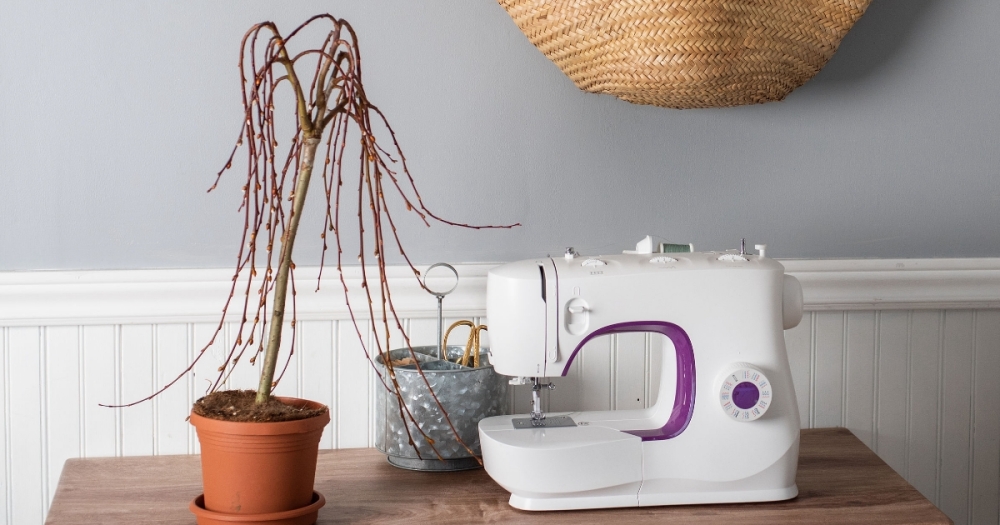
Looking for more information on Salix (Weeping Pussy Willow)? Dry your tears and read on for more information about this enchanting little tree.
Salix Caprea ‘Pendula’ is a grafted pussy willow. The branches are grafted onto the top of the trunk, allowing them to trail down. Therefore, it is different from ungrafted Salix Caprea, which in the wild can grow much larger.
This tree goes by many names, such as Salix Caprea 'Kilmarnock', Kilmarnock Willow, Weeping Goat Willow, and Weeping Pussy Willow. The alternate name, 'Kilmarnock,' comes from the fact that it was first introduced into commerce in 1853 by Thomas Lang of Kilmarnock, Ayrshire, Scotland.
Salix is a perennial tree. It consists of a solid trunk, with grafted stems. These stems are covered in silvery white catkins, which as they emerge, will give way to yellow stamens covered in pollen.
Once new shoots (green leaves) start emerging, branches should be cut back to within two inches of the stem, allowing new branches to develop for the following year. New branches will grow upright until they begin to hang down because of their length or weight.
Prune in late winter or early spring before new growth starts. Remove any dead, diseased, or crossing branches to maintain the plant’s shape and encourage healthy growth. Light pruning after flowering can help shape the plant.
Salix is a cold-hardy tree and is suitable to be grown outside in USDA zones 4-9. It prefers temperatures of -20 to +25ºC (-4 to +77ºF). The best time to plant your salix outside is in the early spring, after the last frost.
Salix can be planted either directly in your garden, or a patio container. Salix plants prefer full sun to light shade.
Salix may be kept inside, but it will need plenty of bright light, regular watering, and room to grow (at least 3ftx3ft if pruned annually).
Salix Caprea/Weeping Pussy Willows can be planted outdoors but can only survive in temperatures of -20-25ºC (-4-77ºF). Salix Caprea/Weeping Pussy Willows are cold hardy and can be grown outdoors in USDA zones 4-9. Before placing your plant outdoors, ensure that you are located in the Hardiness zones where it can survive.
Salix should be kept well-watered, especially if being kept in its grower pot. It should not be allowed to dry out, even in winter months. Be sure to discard any excess water at the bottom of its pot if watering into a pot without drainage holes.
Place your Salix caprea in a spot that receives bright, indirect sunlight. A south-facing window with filtered light is ideal. While it can tolerate some direct sunlight, too much can scorch the leaves.
If natural light is insufficient, consider using grow lights. Position the lights about 12 inches above the plant and provide 12-16 hours of light daily.
Salix caprea typically does not require heavy fertilization. However, if the soil is poor or lacking in nutrients, you can apply a balanced fertilizer in the spring before new growth begins. Avoid over-fertilizing, as this can lead to excessive foliage growth at the expense of flowering.
Salix Caprea Pendula requires a well-draining, slightly acidic soil medium. Coconut coir is used as a soil additive for salix when grown indoors as it helps promote drainage while keeping the soil lightly moist. Salix Caprea Pendula requires a well-draining, slightly acidic soil. Coconut coir is used as a soil additive for salix when grown indoors as it helps promote drainage while keeping the soil lightly moist.
Salix Caprea Pendula is a grafted willow and will grow to about 3ftx3ft if properly maintained.
It is possible to propoagate a Salix Caprea/Weeping pussy willow via hardwood cuttings. However this can be difficult, require some trial and error and may not be successful.
We recommend doing your own research into hardwood cuttings if you want to attempt this. However due to its difficulty is not recommended. As well as the Salix is a grafted tree so propogation will not allow your salix to grow like your current one.
Salix caprea thrives in moist, well-drained soil and prefers full sun to partial shade. It is often planted near water bodies or in areas that can have consistent moisture. You can place them in your front lawn but be sure to not place them too close to driveways as over time its root system can grow and spread under it.
If you notice your salix caprea's trunk become soft then your plant more the likely has root rot. Let your plant's soil fully dry out and then you can repot your plant after. Remove any rotted or damaged roots and measure it root ball and choose a pot that is 1-2" larger than the root system.
You can also spray your plant with a diluted solution of hydrogen peroxide directly onto the roots to kill off any lingering fungal infection. If your trunk has rotted out fully then you can cut down the stem to the dry part and remove the soft portion and monitor your plant to see if it produces new growth.
Common pests include aphids, spider mites, and scale insects. Diseases such as rust, canker, and leaf spots can also affect Salix caprea. Regular inspection and prompt treatment with insecticidal soap or neem oil can help manage these issues.
Not Pet Friendly – Toxic to Pets, if consumed, according to ASPCA
For outdoor plants, ensure the tree is well-mulched to protect the roots from extreme cold. For indoor plants, maintain humidity levels and avoid placing the plant near cold drafts or heat sources. Reduce watering and feeding during the dormant period.
Happy planting!